Abstract In 2016, one of the largest renewable energy companies in the world, US-based SunEdison Inc., filed for bankruptcy when it couldn’t service the debt it had raised to...
Abstract This two-part case examines a major reorganization process which took place at Ten Thousand Villages Canada in 2013, as a response to severe challenges from the aftermath of...
Abstract The dislocation of millions of people in various conflict zones of the Middle East and Africa is one of the greatest humanitarian catastrophes of our time. Given the...
Abstract Shortly after the Fukushima meltdown of 2011, the Swiss government developed an Energy Strategy 2050, aimed to build up renewable energy capacity, improve energy efficiency and phase out...
Abstract Founded in 2013 in Boston, Massachusetts, Fresh Truck is a mobile fresh produce market focused on increasing access to fresh produce and nutrition education in Boston’s low-income neighborhoods....
Abstract With no previous experience in the mobile phone industry, Bas van Abel, an industrial designer based in Amsterdam, started Fairphone as an NGO [non-governmental organisation] awareness campaign...
Abstract The success of Apple Inc.’s products like the iPhone and the iPad made the company rely on manufacturers in Asia to produce its products at a lower...
This year’s Germany Meeting will carry the title of: (Re-)Thinking Sustainability.
Abstract: In three years, a small team of engineers led by a visionary entrepreneur Mr. Christian Thomas has developed a new process for producing iron, aluminum, copper, as...
Abstract The purpose of this case study is to discuss the relation between management and sustainability, paying specific attention to the issue of supply chain and innovation. IKEA,...

